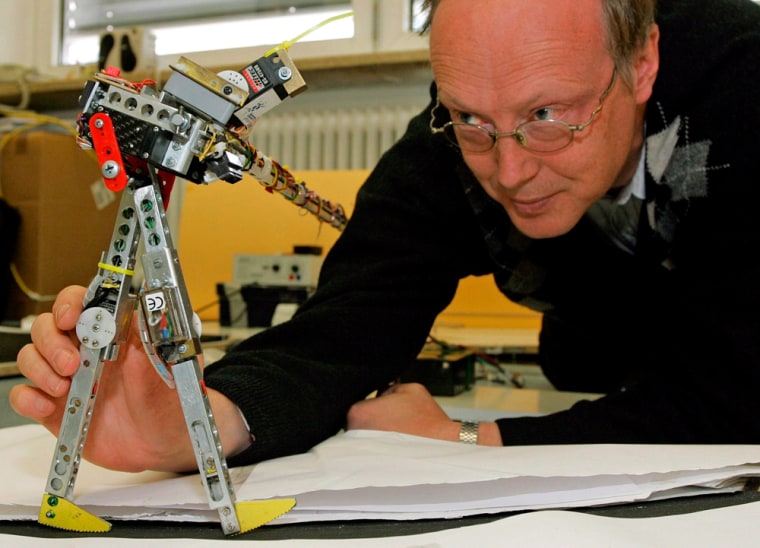A walking robot that adapts to different terrain is helping scientists understand how humans move and could one day lead to improved treatment for spinal cord and other injuries, German researchers said on Friday.
Previously, RunBot the robot’s inventors said the 1-foot-tall machine could only walk forward on flat surfaces and would topple over when encountering a slope.
But using an infrared eye, the robot can now detect an incline in its path and adjust its gait after four or five attempts to navigate up the slope, researchers said.
The machine, which simply falls over until it learns to walk uphill, takes 3-4 stride lengths per second, a touch faster than the normal human gait of about 1.5 to 2.5 stride lengths per second.
“It is trial and error learning,” said Florentin Woergoetter, a researcher at the University of Goettingen who helped design RunBot.
“It needs about four or five falls to learn this.”
Woergoetter, who published his findings in the journal Computational Biology, compared the process with the way a child learns to walk. He said just like humans, RunBot leans forward slightly and uses shorter steps to navigate uphill.
A key is the robot’s “brain” — in this case the infrared eye connected to the control circuits—which directs the machine to change its gait when needed.
Previous research suggests the motor control system in humans consists of a hierarchy of levels where interactions between muscles and the spinal cord work largely on their own until a higher level of control—the brain—is needed.
This relationship can help explain how some paraplegics are able to use their legs on a treadmill while suspended in a harness, and was key to the research, Woergoetter said.
Studying a robot to gain a better understanding of how different parts of the body work when walking could have practical applications to improve health care for humans, he added.
This could include designing better prosthetics for amputees or helping therapists work with patients with spinal cord and other severe injuries with a goal of getting them mobile again.
“The robot is essentially a model of the human biped walking and can be used to improve understanding and for better treatment methods,” Woergoetter said.
